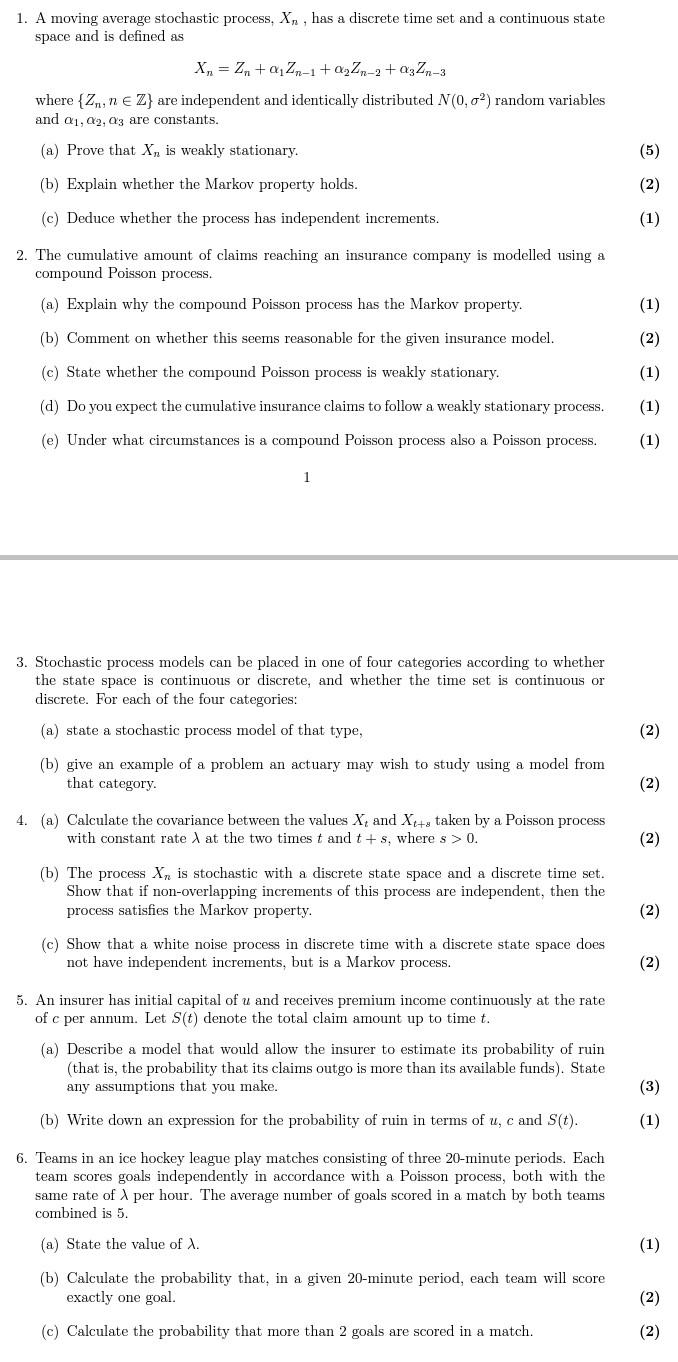
1. A moving average stochastic process, Xn, has a discrete time set and a continuous state space and is defined as Xn=Zn+1Zn1+2Zn2+3Zn3 where {Zn,nZ} are independent and identically distributed N(0,2) random variables and 1,2,3 are constants. (a) Prove that Xn is weakly stationary. (b) Explain whether the Markov property holds. (c) Deduce whether the process has independent increments. 2. The cumulative amount of claims reaching an insurance company is modelled using a compound Poisson process. (a) Explain why the compound Poisson process has the Markov property. (b) Comment on whether this seems reasonable for the given insurance model. (c) State whether the compound Poisson process is weakly stationary. (d) Do you expect the cumulative insurance claims to follow a weakly stationary process. (e) Under what circumstances is a compound Poisson process also a Poisson process. 1 3. Stochastic process models can be placed in one of four categories according to whether the state space is continuous or discrete, and whether the time set is continuous or discrete. For each of the four categories: (a) state a stochastic process model of that type, (b) give an example of a problem an actuary may wish to study using a model from that category. 4. (a) Calculate the covariance between the values Xt and Xt+s taken by a Poisson process with constant rate at the two times t and t+s, where s>0. (b) The process Xn is stochastic with a discrete state space and a discrete time set. Show that if non-overlapping increments of this process are independent, then the process satisfies the Markov property. (c) Show that a white noise process in discrete time with a discrete state space does not have independent increments, but is a Markov process. 5. An insurer has initial capital of u and receives premium income continuously at the rate of c per annum. Let S(t) denote the total claim amount up to time t. (a) Describe a model that would allow the insurer to estimate its probability of ruin (that is, the probability that its claims outgo is more than its available funds). State any assumptions that you make. (3) (b) Write down an expression for the probability of ruin in terms of u,c and S(t). 6. Teams in an ice hockey league play matches consisting of three 20-minute periods. Each team scores goals independently in accordance with a Poisson process, both with the same rate of per hour. The average number of goals scored in a match by both teams combined is 5 . (a) State the value of . (b) Calculate the probability that, in a given 20-minute period, each team will score exactly one goal. (c) Calculate the probability that more than 2 goals are scored in a match







